When I was a younger lad, all fresh out of art school, I remember being all about speed. I was obsessed with banging out paintings as quickly as possibleYou, rushing through them almost as if it was a race or something.
Some of it was likely a leftover byproduct of the conditioning we receive in school, where were told again and again that you need to be fast to make it as an illustrator. I also started school late and have always felt this need to make up for lost time I spent screwing off.
But something I eventually come to realize in this quest to be fast and economical I’d been missing out on this whole other aspect and approach to painting. The long game.
For a good many years, I’d often paint things in one, sometimes two passes, almost always working wet in wet and rarely painting back into stuff. Part of it was out of fear that I’d lose freshness and spontaneity. Some of it was this idealized notion that a painter is supposed to just dash paintings off quickly and effortlessly (never got that last part nailed down)

5×5 foot painting i did around 2001. sketchy, but in ways that were largely being dictated by my lack of understanding. think i painted this in 3 days. could have used a few more for sure
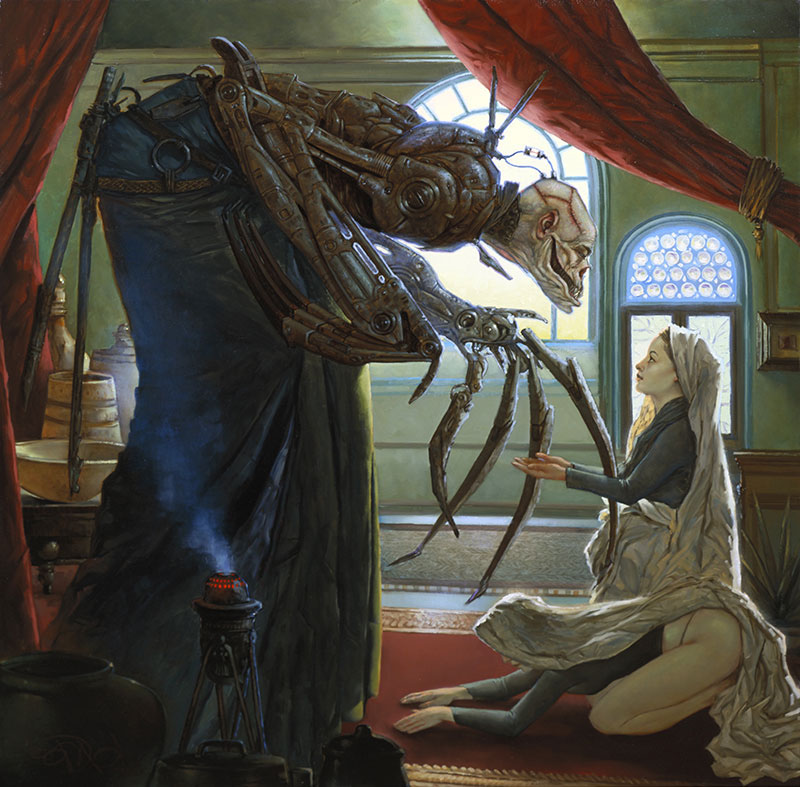
painted this in 2003. again mostly a one-pass approach, and while its passable for an illustration, there are so many missed opportunities to dial in the surfaces and textures as well as refine the drawing
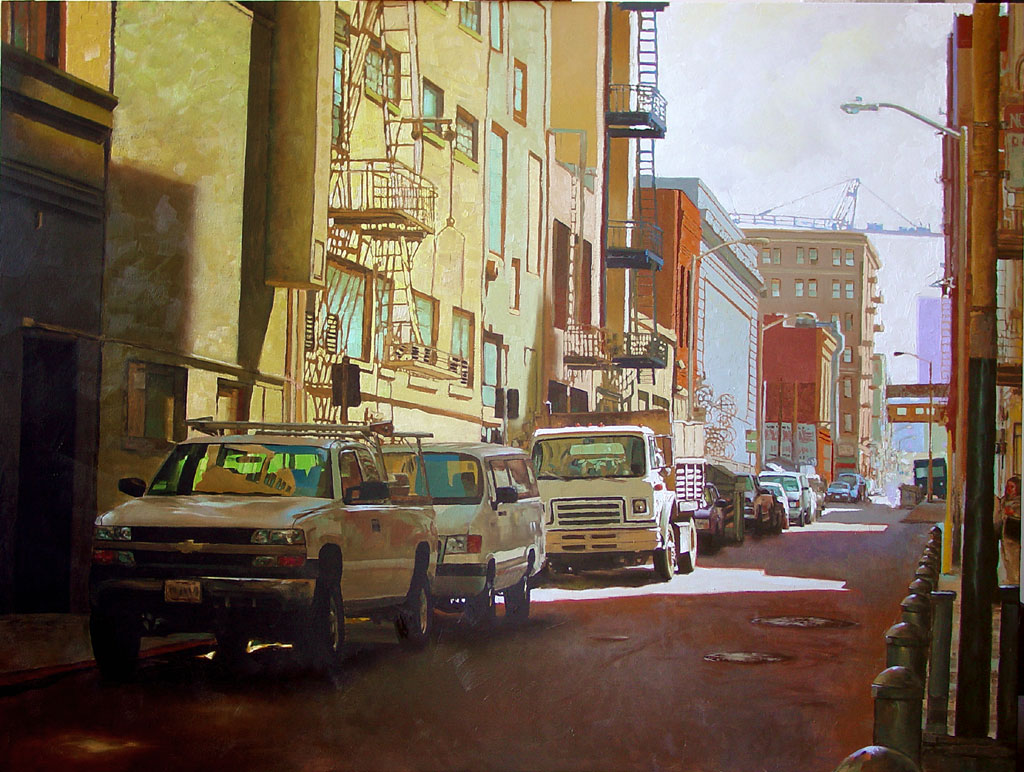
this was around 2004? working wet in wet, left to right started to create this kind of faceted look. so many wonky passages and no good straight edges. it was a stylistic choice, man! 😛
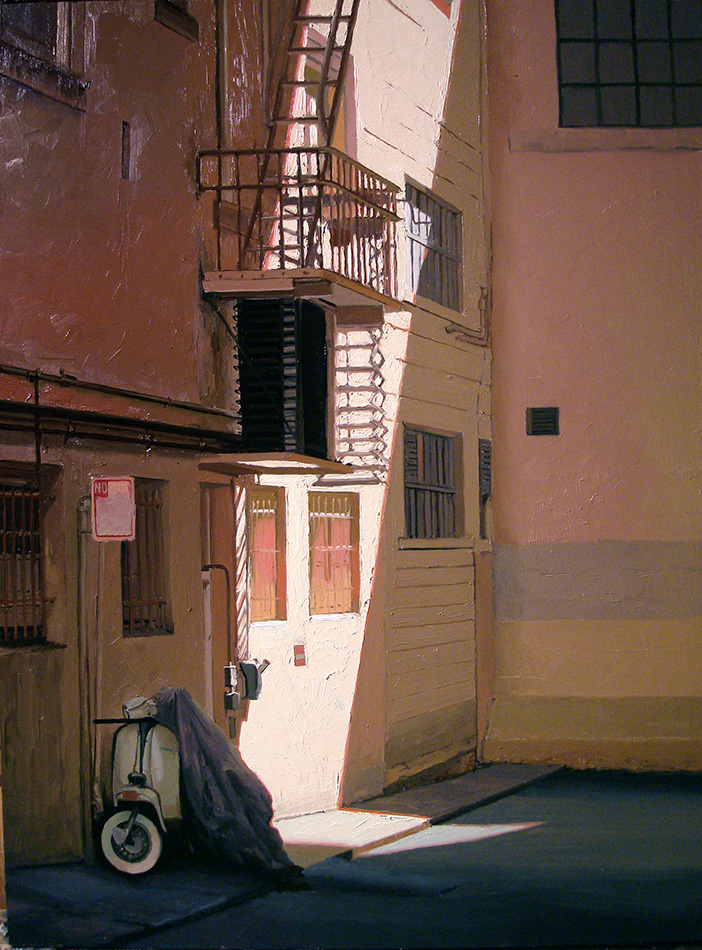
early 2006? kind of embracing that faceted approach. dont hate this but there are some wonky ass areas and some real missed opportunities for softer edges in the shadow areas as well as textures (that street immediately comes to mind)
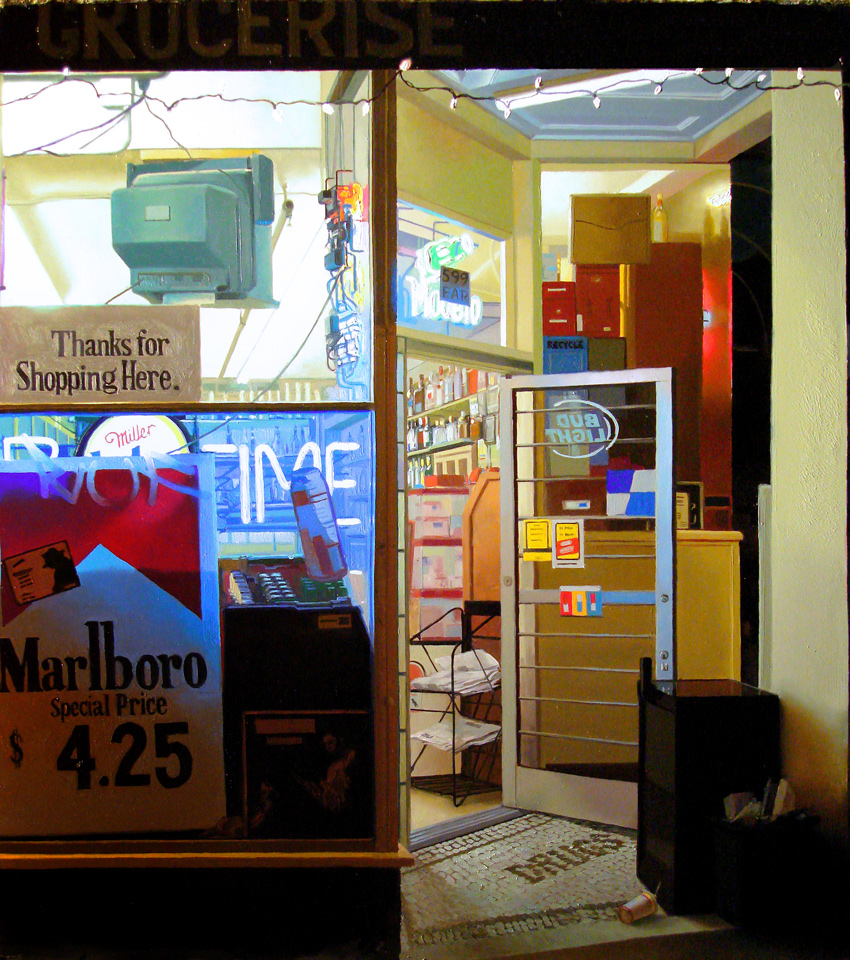
again early 2006. this was like at the peak pf my one pass faceted approach. still kind of proud of it for certain things (that newspaper rack) but again some real missed opportunities sacrificed for this flatter style
Working like this can be beneficial in some ways. It allows you to cover a lot of ground, experiment a lot, and grind out a bunch of work. You can get a good amount of those bad ideas out of the way without getting too hung up open them.
Downside to this is that there are often missed opportunities to dig beneath the surface and truly understand subtitles and nuances that can really make a piece sing.
I think my mindset toward this began to shift with a graphic novel I wrote and drew some years back. It ended up being around 230 pages, and since it was all painted, it took almost 4 years to complete. It was something that just by its nature could not be done in a short amount of time.
While working on it, especially on some of the more complex pages, I came to this realization that I didn’t have to get it all right on the first pass. Some pages would take days, and it was that slower pace that made the problem solving process feel more like chess than wrestling.
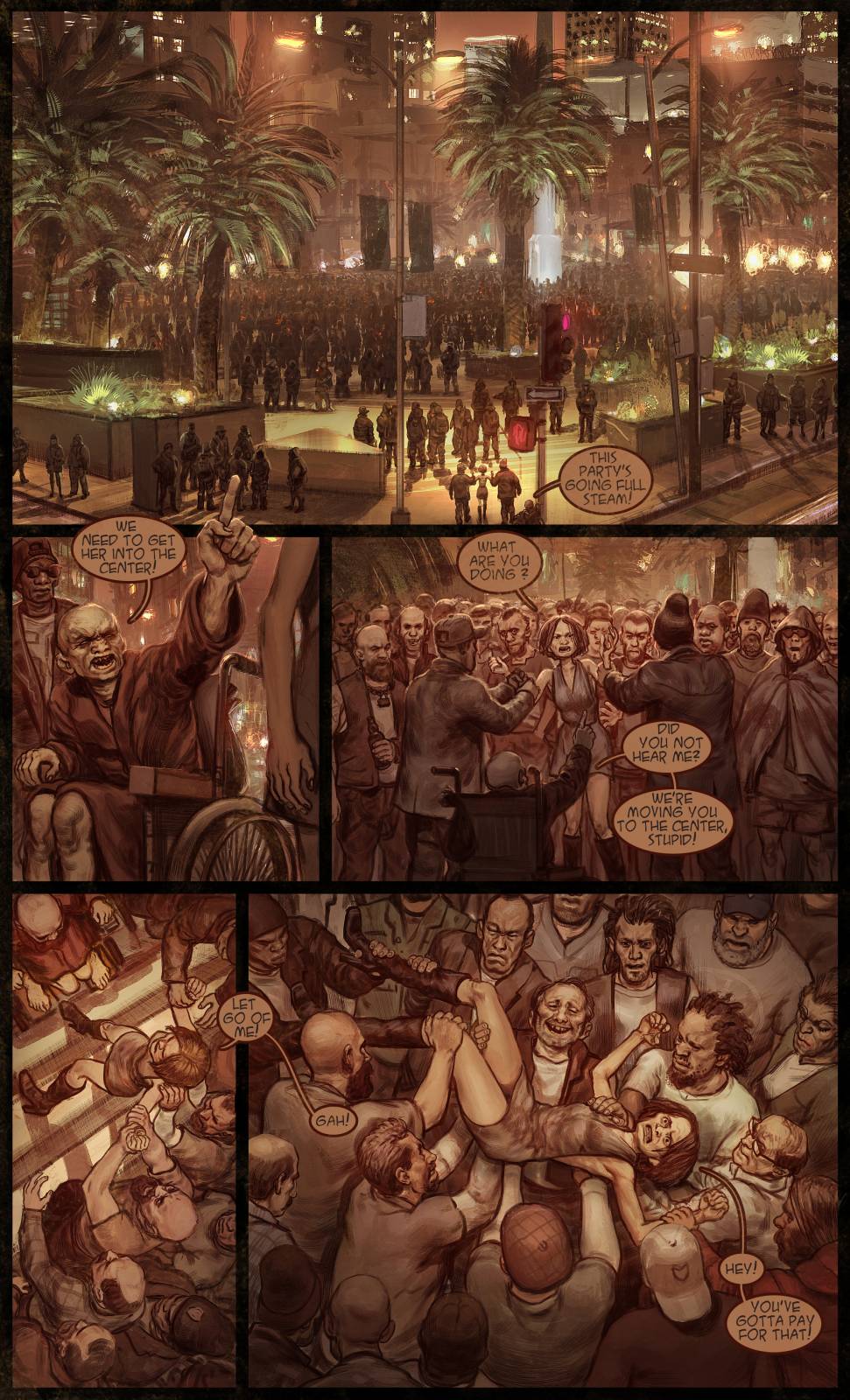
I remember this page being kind of turning point for me. that establishing shot, with the crowd of people and those last few frames took days. but in the end I was happy I sunk the time in and got something closer to what I’d envisioned, as opposed to compromising for convenience.

stuff like this just isn’t going to get done in a day. Definitely not when you have a full time job and an infant. but a lot of the pressure is taken off when you sit down, pick an area and say “This is where ill spend my evening” instead of stressing about the whole thing and rushing.
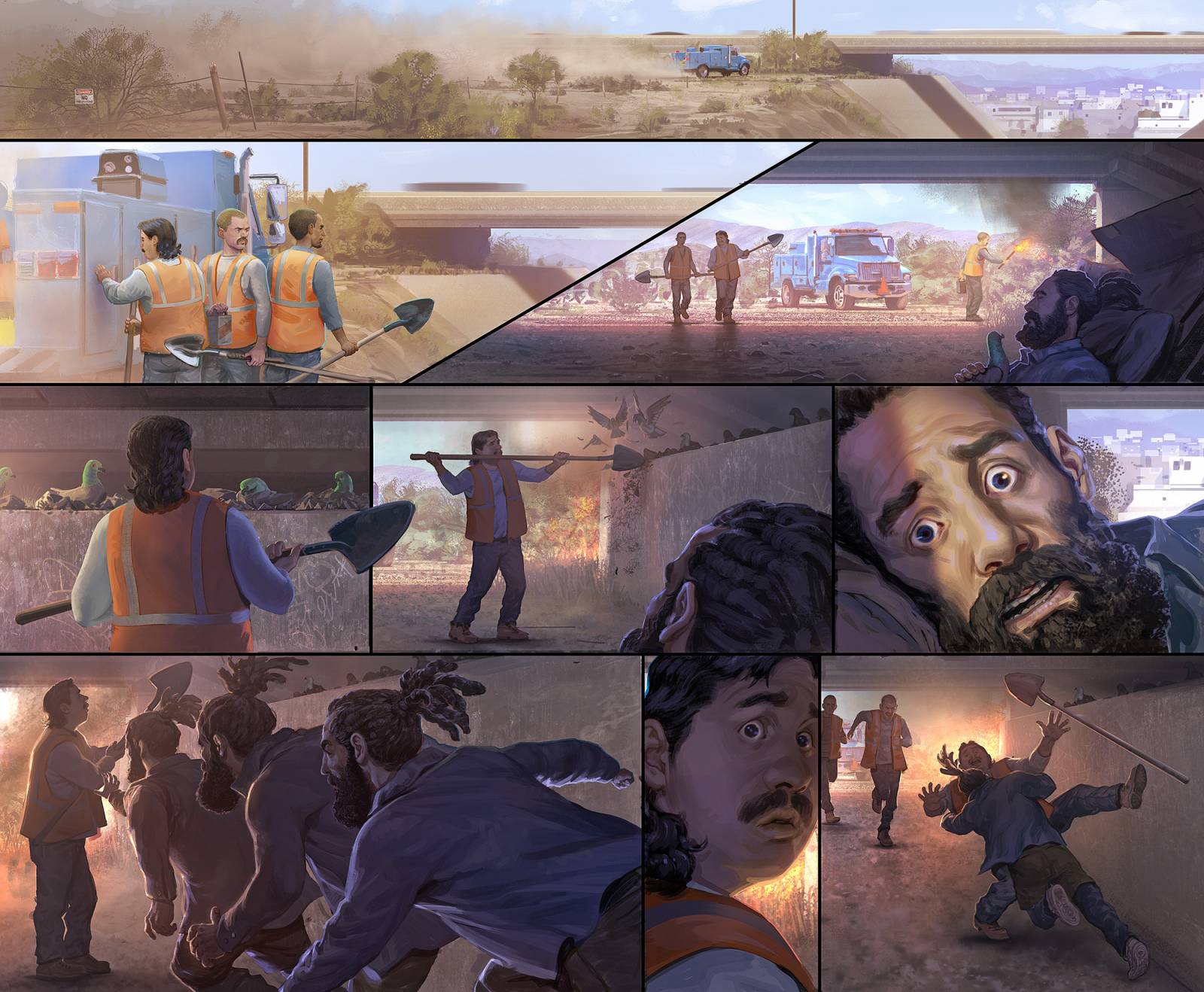
2012 ish? never finished this story, but remember this page took forever. again kind of worth it to me though, in order to help tell the story as clearly as possible.
It was like lightbulb went on. I became much more deliberate in how I approached pieces, planning and pacing things a bit more. This also allowed me to multi task on multiple pieces more effectively.
Shortly after completing that comic book, I became a parent. This lifestyle change only served further to reinforce more of a slower, layered approach to oil painting. And it opened up a whole new world to me.
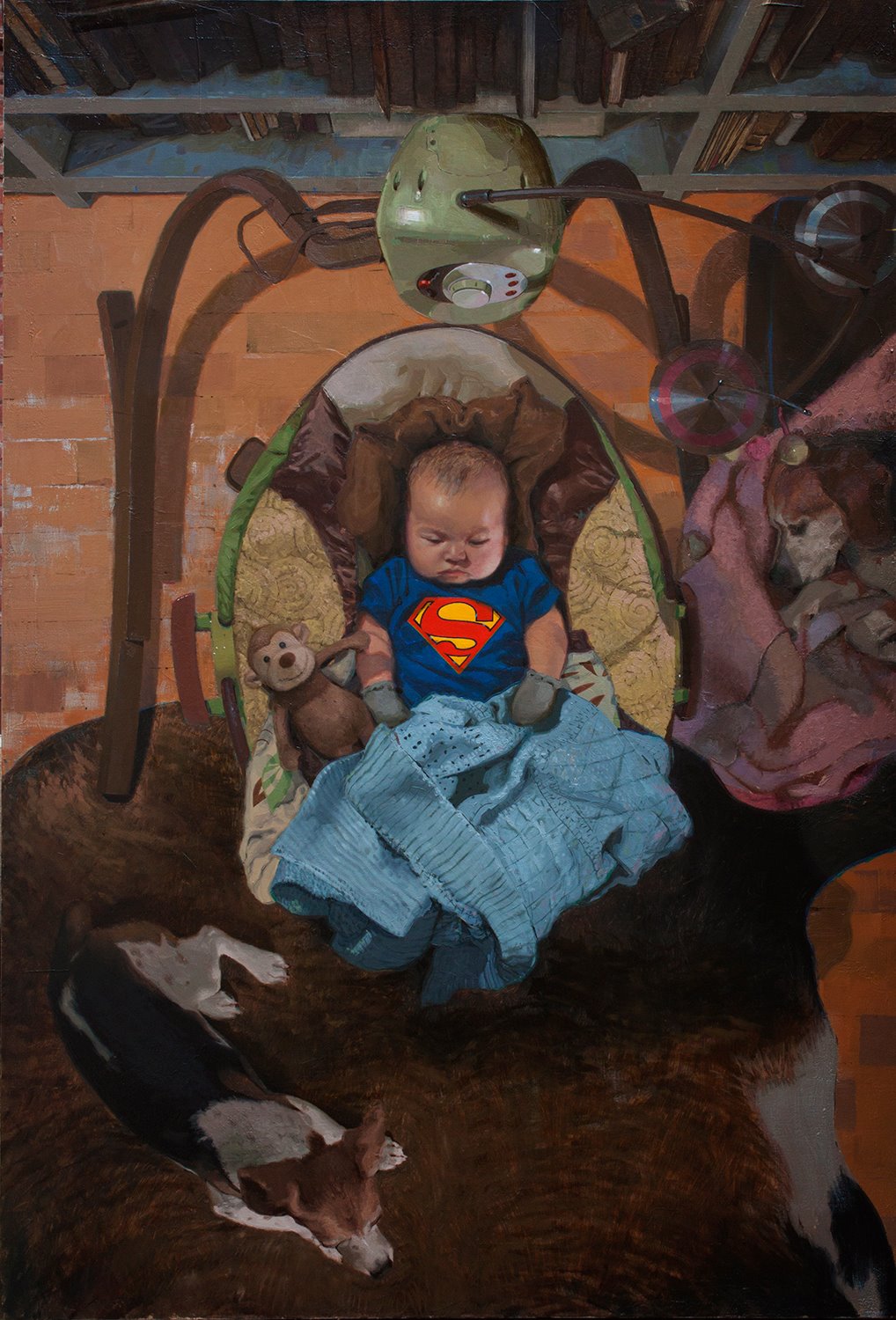
this was also kind of a breakthrough piece for me, just in terms of pacing it out and aggressively repainting things that didn’t feel right. i completely repainted that head three times. maaan babies are hard to paint! especially if you’re striving for likeness on top of it just looking like a human baby.
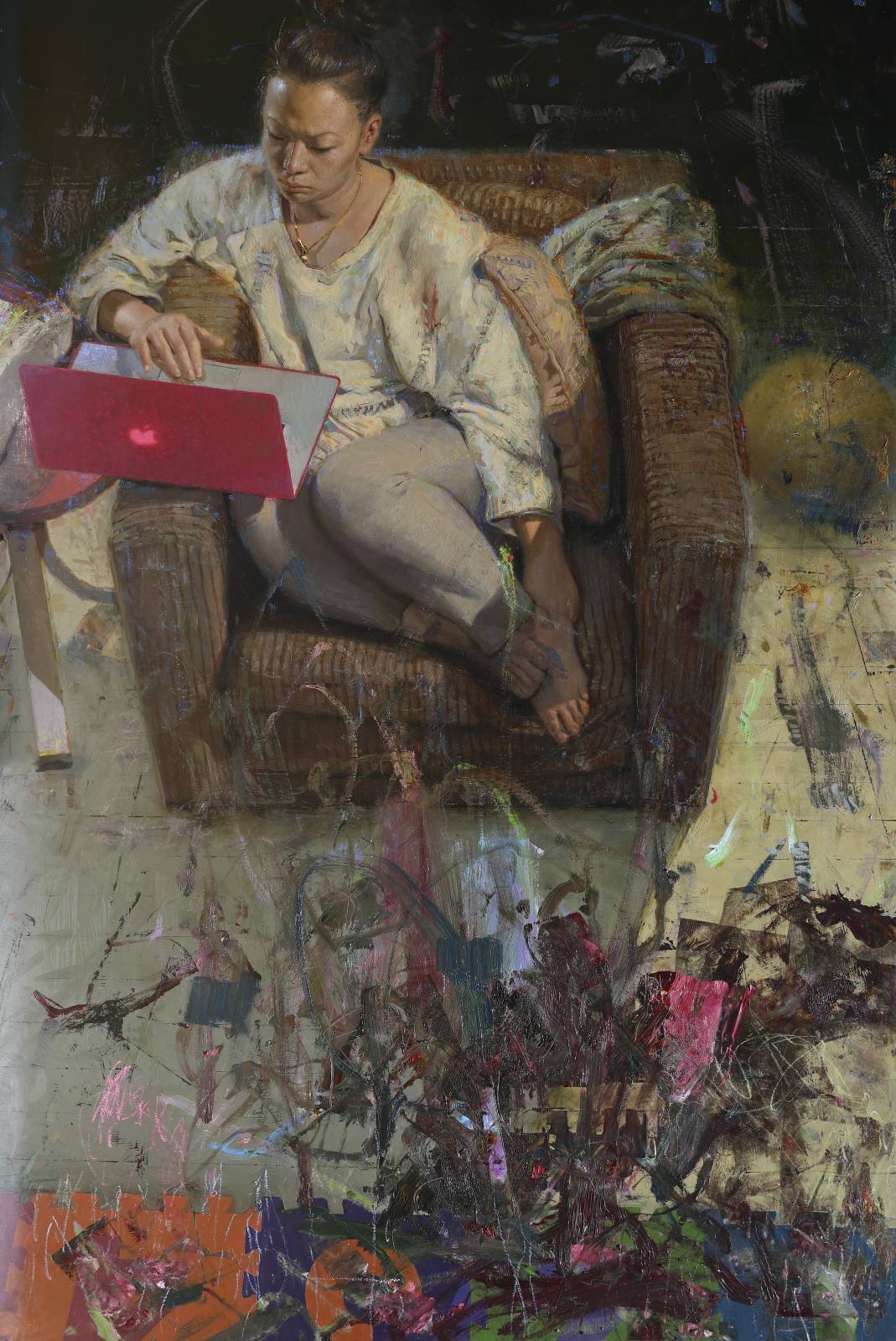
Another one where I repainted the face several times, and spent at least two months on it, only to let my 15 month old son paint all over it. Kind of an interesting exercise in letting go and not being so precious with your work. Also an interesting way to get all sweaty without any exercise.
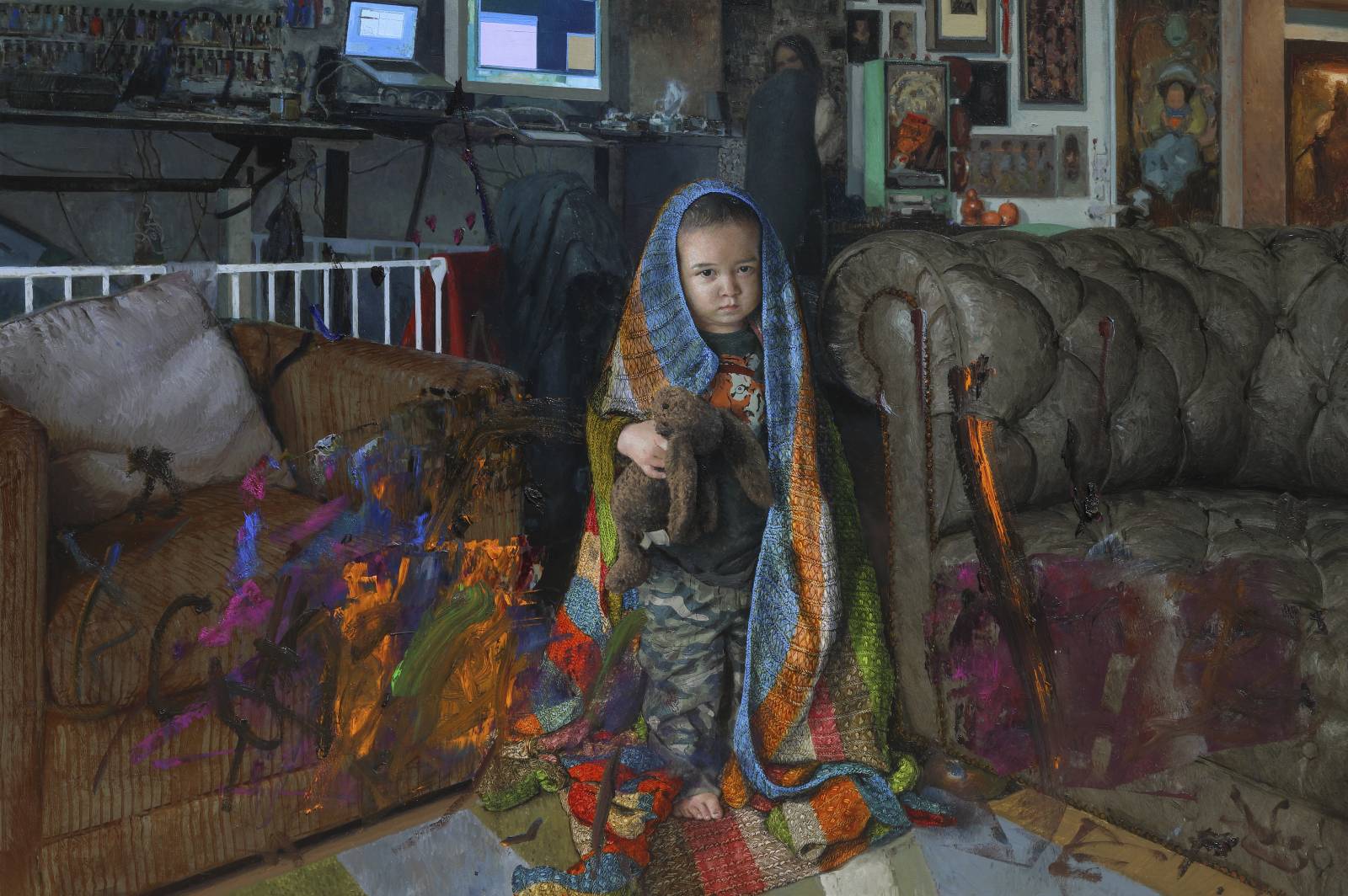
this one should be called “please just dont get too much paint on that blanket, it took forever, okay?” while some of those background elements were one pass, i repainted that damn stuffed rabbit several times trying to get that matted texture right. again working in layers over a period of months enabled me to get a pretty good likeness and thought out picture.
Spacing things out and working more in layers creates so many cool new textural opportunities beyond wet-in-wet. I also love the texture and surface that working in more of a layered approach creates. It just brings a completely different dimension to it for me.
Where I’d once feared losing that spontaneity, I discovered that taking my time and working in layers allows for more considered strokes, creating a different and more concise form of liveliness to the mark making. For me it also yields a much more accurate end result. Ive found what might look fine one night can require significant rework the next day, and it’s worth digging in and making a mess if it means it’ll look better. In some ways I feel like its made me more of a confident painter, less afraid that ill ruin what I’ve already put down.
These past years painting more nature-based subject matter, the layering and length I spend on a paintings has increased even more. Some of the more complex forest scenes can take months to complete. Yet again, its less about coming into the studio and wrestling with them so much as it’s evaluating, and making careful, considerate moves. Sometimes they don’t get touched for weeks. Ill keep them up, and make a mental list of stuff I want to address, and when I sit down with it, it might be an hour, might be 15 minutes, but ill have already figured out what I need to do so I’m not searching or meandering.
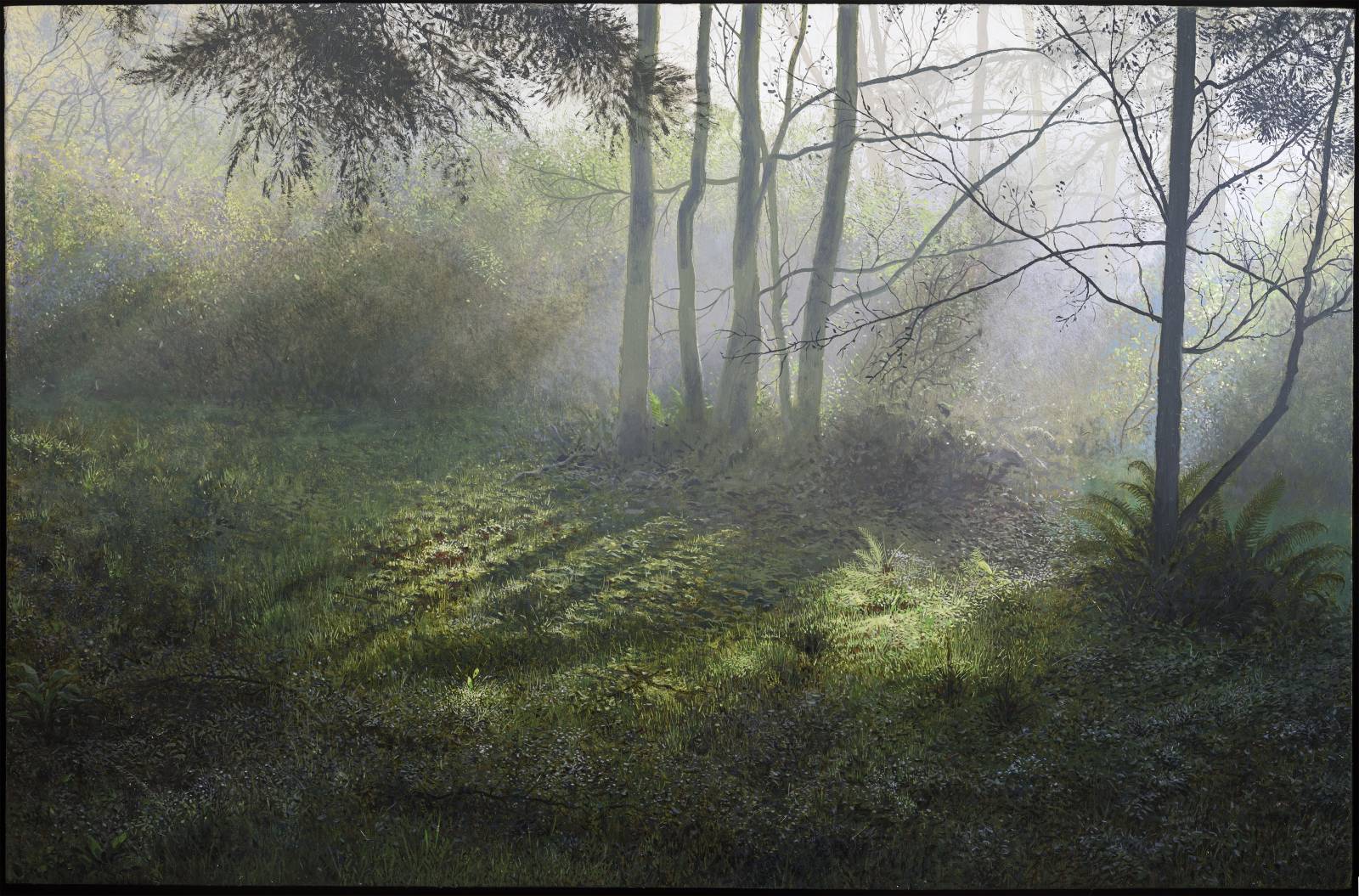
the atmospheric stuff in this one would be practically impossible for me to get to this level of fidelity without working in layers.
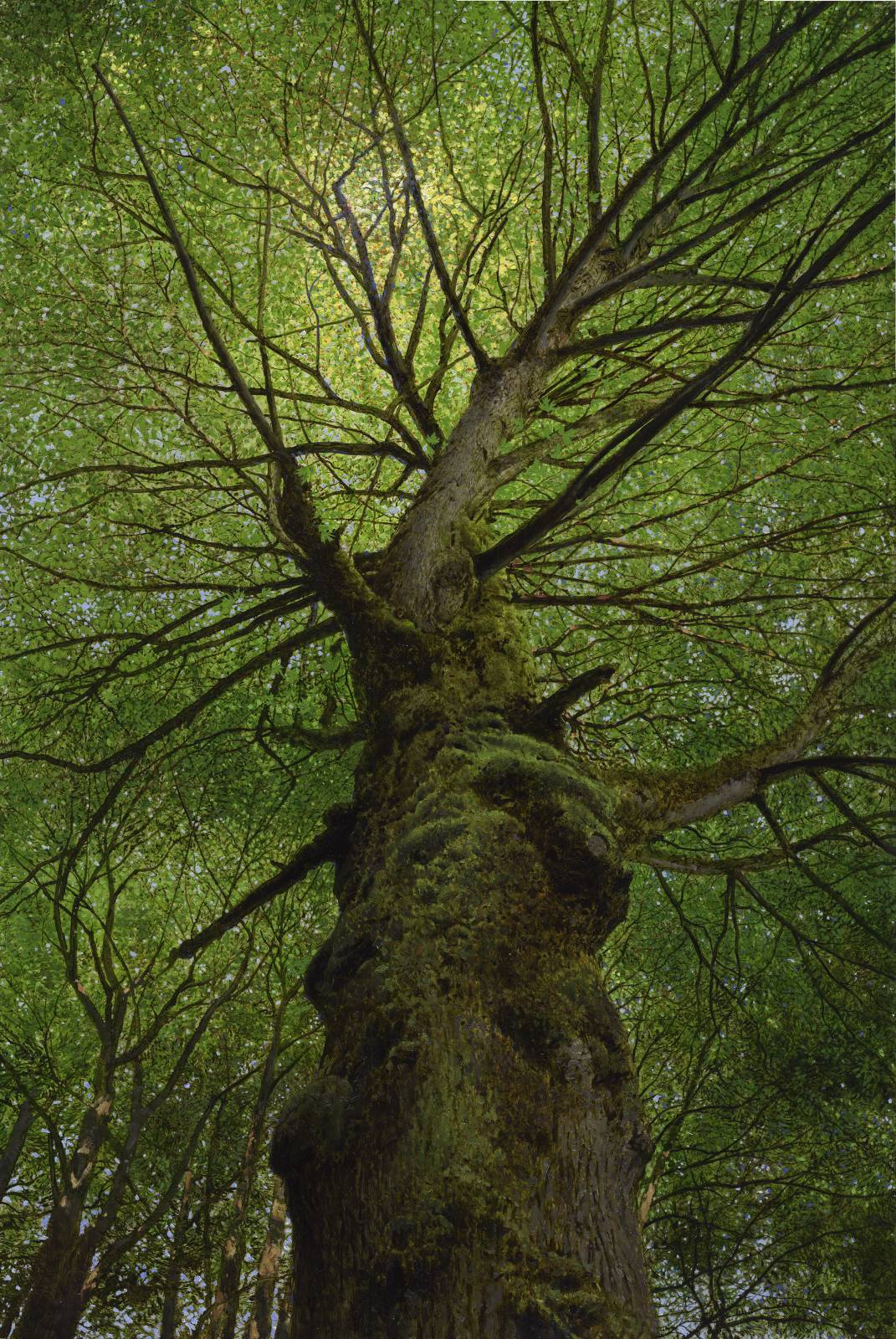
a lot of the texture in this piece is a byproduct of a wetter monochromatic underpainting, which helps to create a lot of the noise not only on the trunk but within the canopy as well.
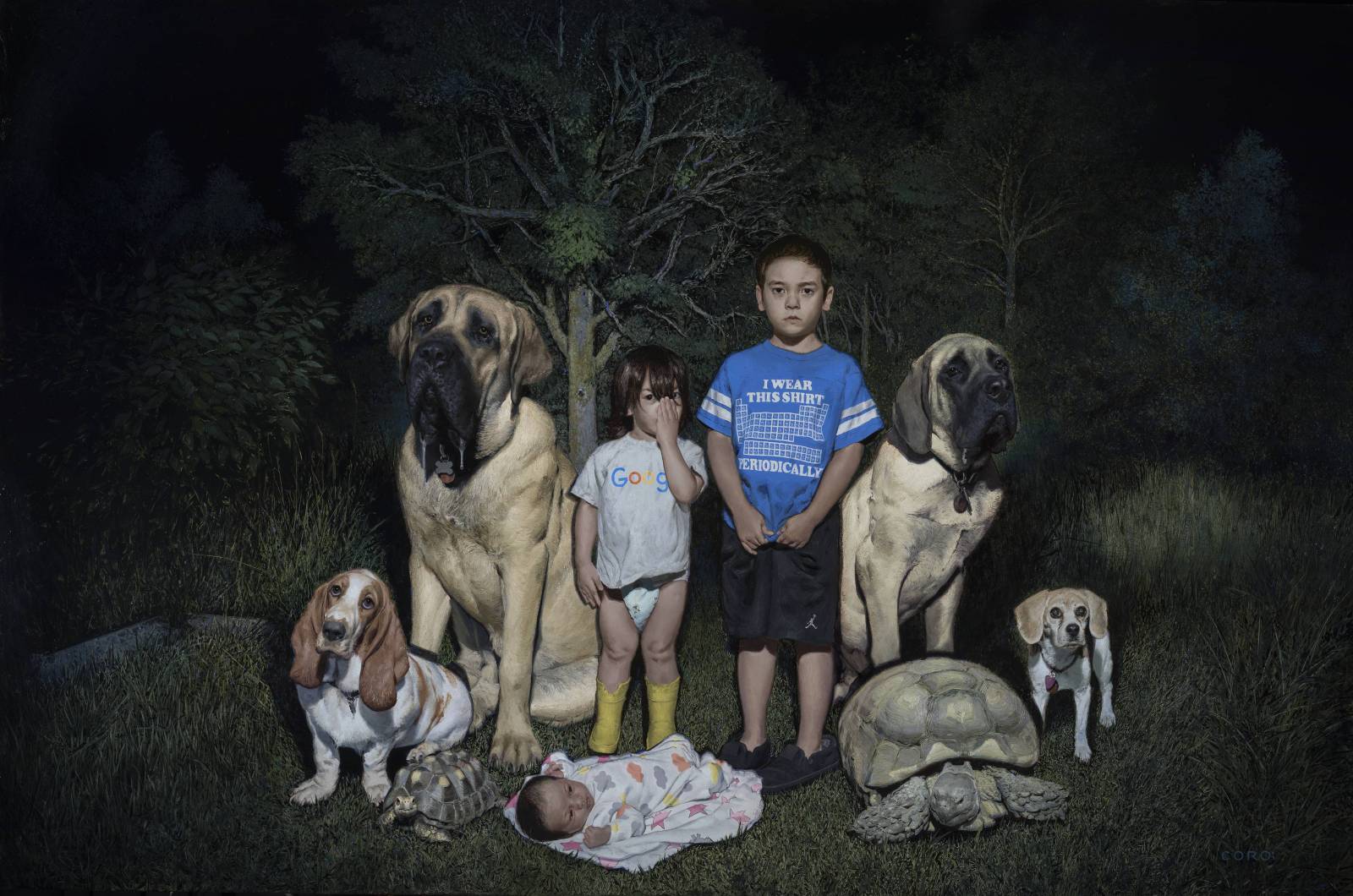
that shirt graphic took me a full 12 hour day haha. and I repainted the kids faces i don’t even know how many times. Elle was 19 days old when i shot my reference of her, and she looked completely different by the time I got it looking okay. this is still one of the pieces i spent the most time on, and i still think about pulling it down off of the wall and working back into it…
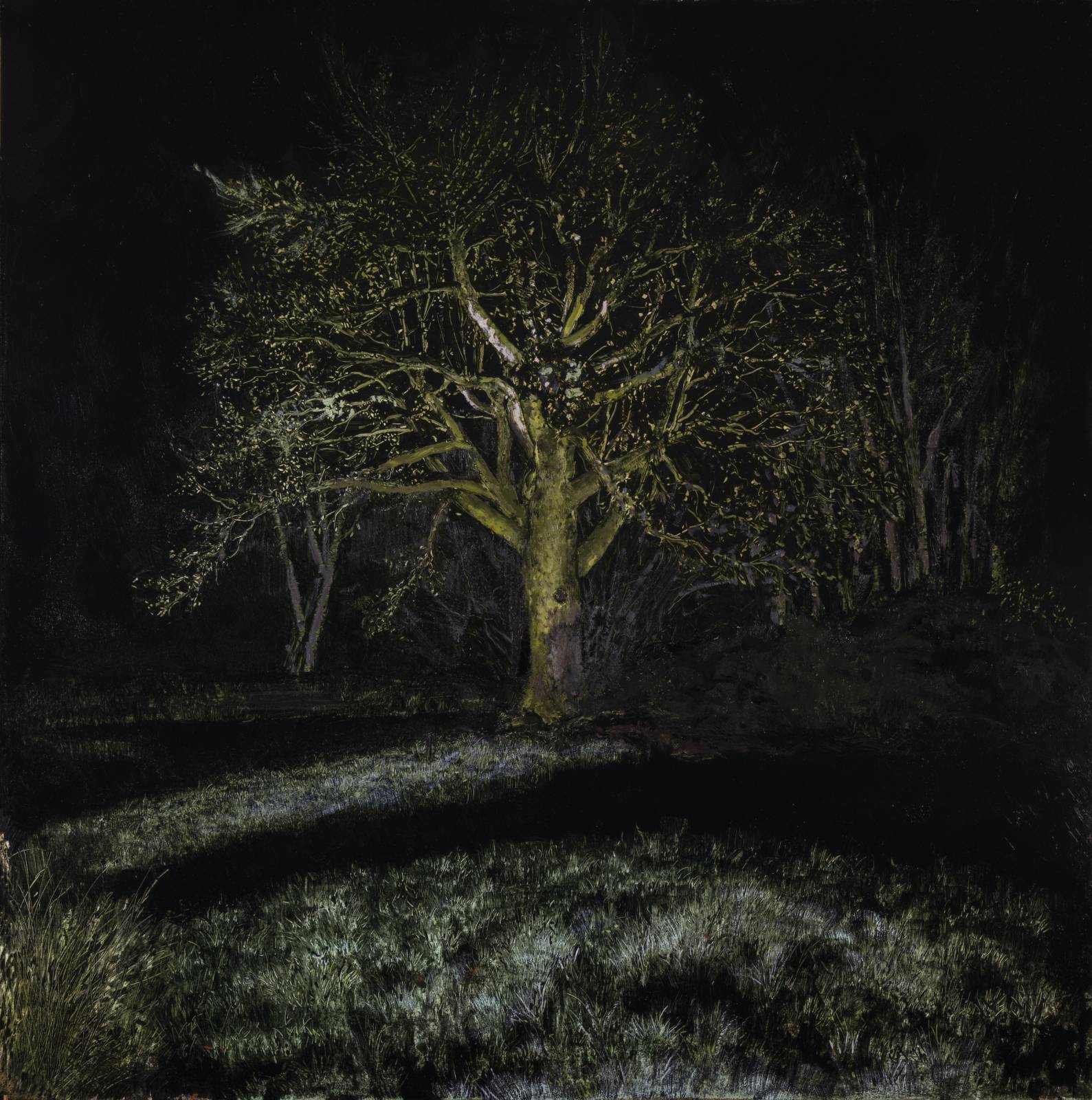
WIP on the easel at the moment. about a week and a half into it. trying to render less and let the paint do more of the work. we’ll see how it goes!
I wanna close this out by saying that everyone has their own way of working, and while I’ve found this more layered way of working suitable for me, I don’t see this method as superior to working more spontaneously. If anything I’m envious of folks who can do more in one pass than I could in 10. If you’re a working illustrator it’s not cost effective to spend 3 months on a painting. But I will say that working like this has taught me a lot, and if anything it’s reenforced the notion that there are unlimited ways to approach painting.
Hope you all had a great 2018. All my best to you for 2019. Thanks again to Dan and Lexie and all the awesome contributors who make this place such an awesome resource for us.


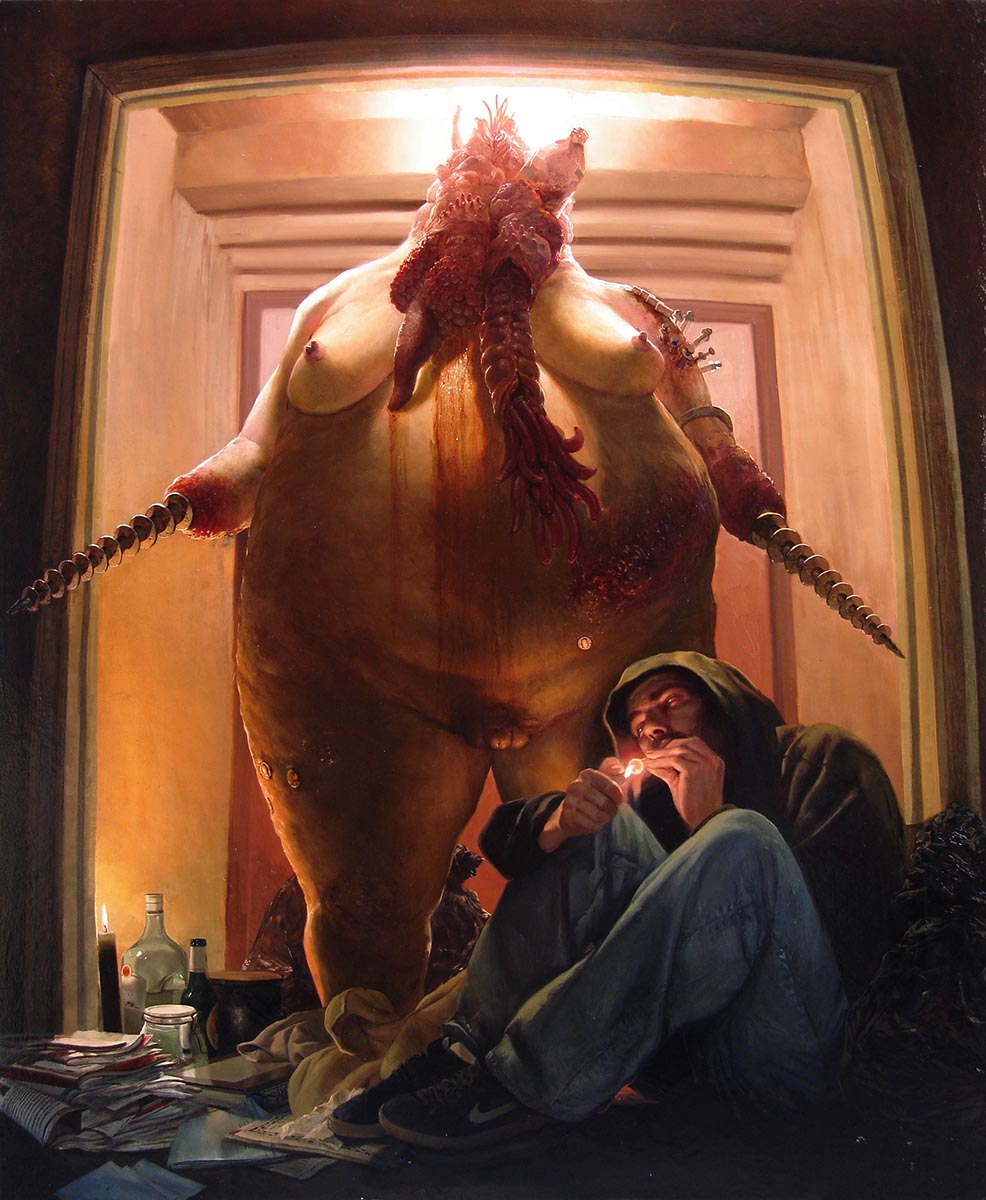
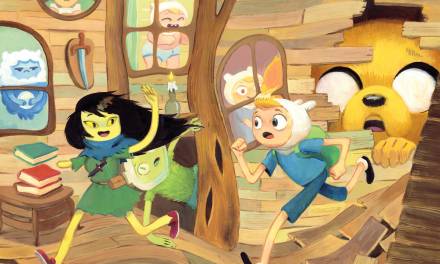
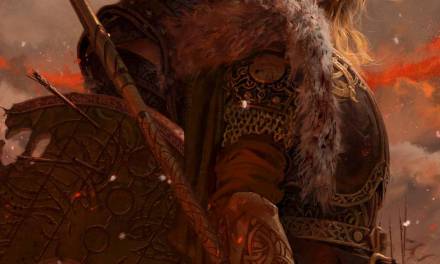
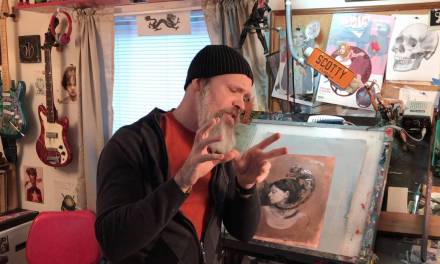
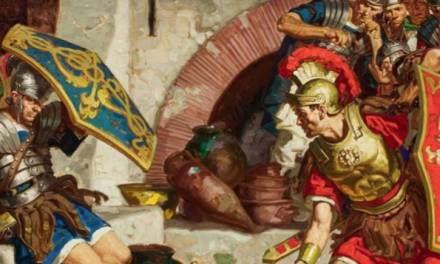
I really enjoy all of your posts. With this one in particular, I love the metaphor of chess vs wrestling: calculation vs brute force (or random chance). It reminds me of an interview with John Wentz I listened to recently, where he talks about the amount of time he spends thinking about his painting vs actually painting, and how that ratio has reversed from when he was a young painter to now. It’s a great reminder to work with intention and do what seems precisely right for the painting, whether you’re an artist who works in 1 layer or 100. Of course, you won’t make the right decision at every turn, but it seems like confidence and intention will show through in the final (just as aimless noodling or robotic execution would also). Thanks for the post!
Stunning stuff Justin.